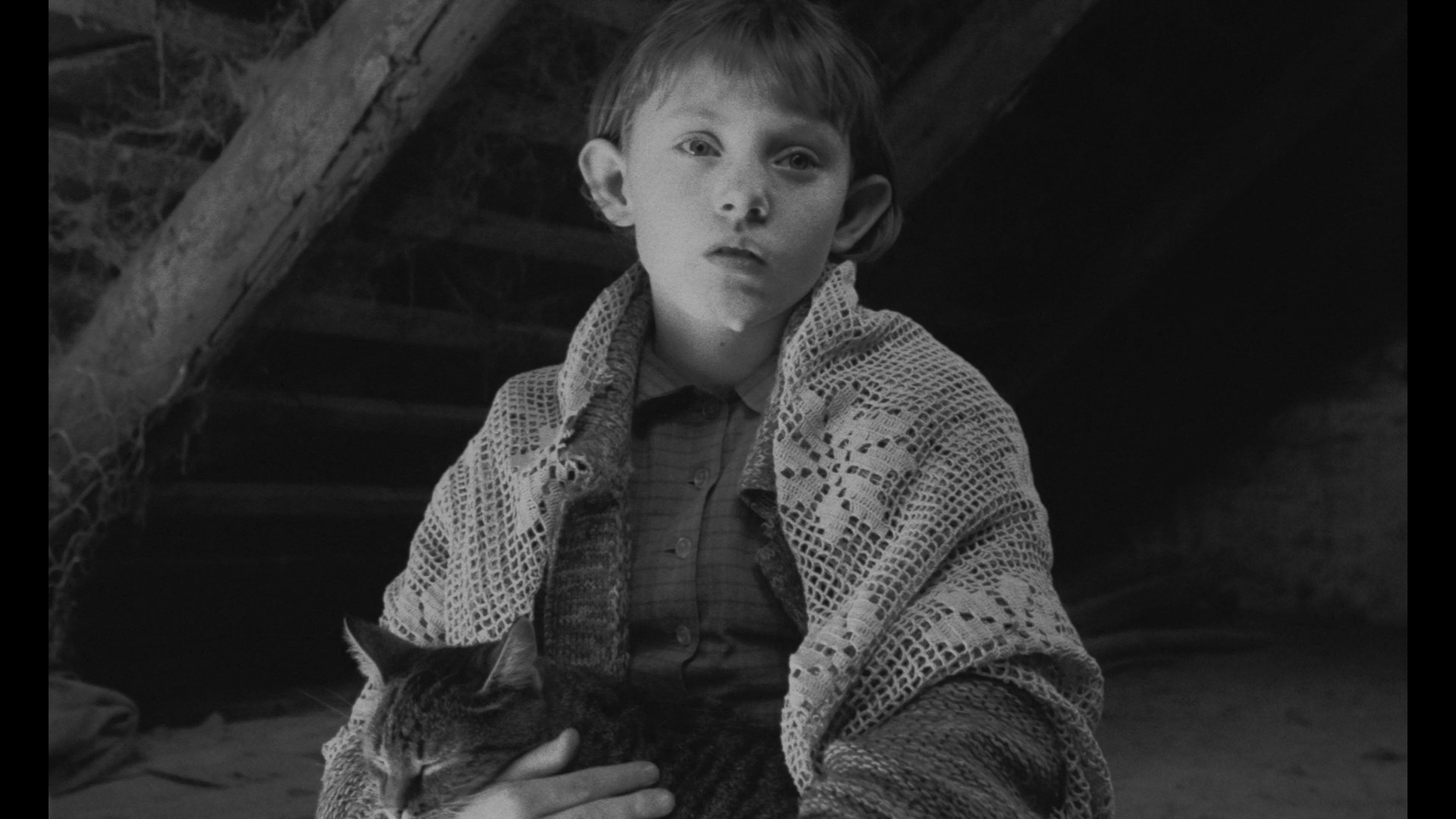

B&W, 1994, 439 mins. (137 mins. 33 secs., 124 mins. 35 secs., 177 mins. 26 secs.)
Directed by Béla Tarr
Starring Erika BókMihály Vig, Dr. Putyi Horváth, Miklós B. Székely, László Lugossy, Peter Berling, Éva Almássy Albert
Arbelos (Blu-ray) (US RA HD), Artificial Eye (Blu-ray & DVD) (UK RB/R2 HD/PAL), / WS (1.66:1) (16:9)
 major name in world cinema but
major name in world cinema but  definitely not for everyone, Hungarian filmmaker Béla Tarr built a challenging and fascinating body of work over the course of nine films from his debut in 1977 through his avowed retirement feature, 2011's The Turin Horse. Taking a grim view of humanity, he found acclaim with many films including Wreckmaster Harmonies and Almanac of Fall; however, the general consensus is that his magnum opus is the epic-length Sátántangó, a meditative, sprawling, seven-plus hours improvised adaptation of a 1985 novel by László Krasznahorkai.
definitely not for everyone, Hungarian filmmaker Béla Tarr built a challenging and fascinating body of work over the course of nine films from his debut in 1977 through his avowed retirement feature, 2011's The Turin Horse. Taking a grim view of humanity, he found acclaim with many films including Wreckmaster Harmonies and Almanac of Fall; however, the general consensus is that his magnum opus is the epic-length Sátántangó, a meditative, sprawling, seven-plus hours improvised adaptation of a 1985 novel by László Krasznahorkai.  once you get acclimated to its rhythms. (The opening lengthy shot of cows moving through the landscape will be a good test to see if you're in the right frame of mind.) The exquisite black and white cinematography by regular collaborator Gábor Medvigy is never less than stunning even when the film gets almost unbearably dark,
once you get acclimated to its rhythms. (The opening lengthy shot of cows moving through the landscape will be a good test to see if you're in the right frame of mind.) The exquisite black and white cinematography by regular collaborator Gábor Medvigy is never less than stunning even when the film gets almost unbearably dark,  including a simulated sequence involving a cat (reportedly supervised by a vet) that will nevertheless have pet owners squirming with discomfort.
including a simulated sequence involving a cat (reportedly supervised by a vet) that will nevertheless have pet owners squirming with discomfort.  chats about his reaction to the novel (including his very different expectations about his character) and his preparation process for his big monologue scene. The new video essay
chats about his reaction to the novel (including his very different expectations about his character) and his preparation process for his big monologue scene. The new video essay  "Orders of Time in Motion" (19m31s) by Kevin B. Lee takes a look at the purpose of the film's long shots (which average out to about 2.5 minutes overall) as they invite the viewer to bring their own perceptions into the images on screen with the camera movement inviting you to find your own way into the film and its human elements in a way unlike traditional cinema. A 2007 archival interview with Tarr (23m7s) conducted by Howard Feinstein at the Walker Art Center spends some welcome time with the filmmaker discussing the film, his approach to Krasznahorkai after receiving the manuscript for the source novel many years earlier, and the theme of loneliness that dominates the film. The U.S. reissue trailer is also included; the specs list a new essay "How to Watch Sátántangó" by Janice Lee and Jared Woodland, though that wasn't in the edition provided for review.
"Orders of Time in Motion" (19m31s) by Kevin B. Lee takes a look at the purpose of the film's long shots (which average out to about 2.5 minutes overall) as they invite the viewer to bring their own perceptions into the images on screen with the camera movement inviting you to find your own way into the film and its human elements in a way unlike traditional cinema. A 2007 archival interview with Tarr (23m7s) conducted by Howard Feinstein at the Walker Art Center spends some welcome time with the filmmaker discussing the film, his approach to Krasznahorkai after receiving the manuscript for the source novel many years earlier, and the theme of loneliness that dominates the film. The U.S. reissue trailer is also included; the specs list a new essay "How to Watch Sátántangó" by Janice Lee and Jared Woodland, though that wasn't in the edition provided for review.![]()